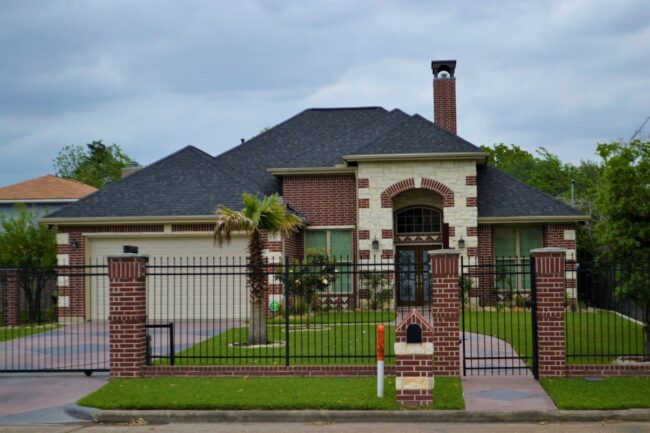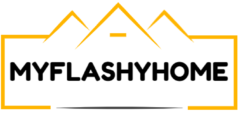
Installing an automatic gate system is one of the most practical upgrades for homeowners, property managers, and businesses. It provides enhanced security, convenience, and curb appeal. But before diving into products and brands, one crucial decision must be made: swing vs sliding gate opener—which one is right for your property?
In this article, we’ll explore the key differences between swing and sliding gate systems, discuss the pros and cons of each, and offer practical guidance to help you select the best gate opener type for your needs. We’ll also cover what to consider when choosing a gate opener kit, and provide expert tips for a smooth installation.
1. Understanding the Basics: Swing vs Sliding Gate Opener
Before comparing features and functions, it’s essential to understand how each gate opener type works.
Swing Gate Opener
A swing gate opener controls a gate that swings open and closed like a traditional door. The gate pivots on hinges, opening inward or outward depending on the design. Most swing gates use a single or dual-leaf configuration and are popular for residential use.
Sliding Gate Opener
A sliding gate opener controls a gate that moves horizontally across a track or rail. This gate type typically slides to one side and is guided by wheels or rollers. It is commonly used in commercial or space-limited settings.
Each type of gate opener has unique characteristics that affect its performance, installation, and suitability for different environments.
2. Pros and Cons: Swing vs Sliding Gate Opener
Swing Gate Openers
Pros:
- Easier and more affordable to install
- Classic appearance, suits traditional residential properties
- Requires less hardware (no track needed)
- Lower maintenance in clean, flat environments
Cons:
- Needs wide clearance area to swing open
- Not ideal for steep driveways or uneven ground
- Can be affected by wind due to surface exposure
Sliding Gate Openers
Pros:
- Better suited for limited spaces
- Ideal for sloped or uneven terrain
- More secure—harder to force open manually
- Operates well in high-traffic or commercial areas
Cons:
- Requires track installation and regular cleaning
- More expensive upfront and during installation
- May need more powerful motors and support components
If you’re evaluating swing vs sliding gate opener options, your decision should be based on space, terrain, usage frequency, and budget.
3. Space and Property Layout Considerations
One of the most significant factors in choosing the best gate opener type is your property’s layout.
When to Choose a Swing Gate:
- You have ample space behind the gate to allow for inward or outward opening
- Your driveway is flat and doesn’t slope significantly
- Aesthetic consistency with home design is a priority
- Lower vehicle traffic
When to Choose a Sliding Gate:
- Space behind the gate is limited or blocked
- The driveway is sloped, uneven, or short
- You want higher levels of security
- You expect frequent daily use or need faster operation
Evaluate how much clearance your driveway allows and whether any landscaping, walls, or slopes interfere with gate movement.
4. Security and Performance Comparison
Swing Gates:
While swing gates are generally secure for residential use, they may be easier to force open due to their hinge-based mechanism. Most swing gates include magnetic or electric locks to enhance security.
Sliding Gates:
Sliding gates are more resistant to tampering. Their weight and track-based mechanism make them harder to push open manually. This makes them preferable for commercial or high-security applications.
If security is your top concern, especially in a business setting, a sliding gate opener is usually the better choice.
5. Maintenance and Durability
Swing Gate Systems:
- Fewer moving parts, which can result in less wear and tear
- Requires hinge lubrication and gate alignment checks
- Vulnerable to damage from wind or impact if not properly supported
Sliding Gate Systems:
- Requires track cleaning and roller maintenance
- Track must remain free of debris, leaves, snow, or ice
- Motors often work harder due to gate weight
If your climate includes heavy rainfall, snow, or dusty conditions, the extra maintenance of a sliding system should be factored in when choosing your gate opener kit.
6. Choosing the Right Gate Opener Kit
Once you’ve decided between a swing or sliding gate, selecting the correct gate opener kit is essential for smooth operation and long-term reliability.
What to Look for in a Gate Opener Kit:
- Gate Type Compatibility: Ensure the kit is designed for swing or sliding gates specifically
- Weight and Length Capacity: Match the motor power to your gate’s dimensions
- Power Source: Choose between electric, solar-powered, or hybrid systems
- Access Control Options: Consider remotes, keypads, smartphone apps, and intercom integration
- Backup Power: Look for battery backup in case of outages
- Safety Features: Ensure the kit includes obstruction detection, auto-reverse, and emergency manual release
If you’re choosing a gate opener kit for a swing gate, look for dual-arm kits for two-leaf gates. For sliding gates, prioritize track alignment support and high-torque motors.
7. Cost Breakdown: Swing vs Sliding Gate Opener
Swing Gate System (Residential Single Leaf):
- Gate: $600–$1,500
- Opener Kit: $300–$800
- Installation: $500–$1,000
- Total: $1,400–$3,300
Sliding Gate System (Residential):
- Gate: $1,000–$2,500
- Opener Kit: $500–$1,200
- Track + Installation: $800–$1,500
- Total: $2,300–$5,200
Sliding gates are typically more expensive due to the track, motor requirements, and complexity of installation. However, they offer greater long-term reliability for high-usage properties.
8. Real-World Application Examples
Suburban Home – Swing Gate:
A homeowner with a flat, spacious driveway opts for a dual-leaf swing gate with a solar-powered opener. It complements the traditional exterior of the home and provides reliable access for family members with low maintenance.
Commercial Warehouse – Sliding Gate:
A logistics facility installs a heavy-duty sliding gate with a high-torque motor and smart access control. It operates dozens of times per day and integrates with the property’s security system for real-time monitoring.
9. Final Considerations for Gate Opener Selection
Before purchasing your gate opener, ask yourself the following:
- How often will the gate be used each day?
- Do you need remote access or smart integration?
- What power sources are available at the gate location?
- Are you in an area with harsh weather, snow, or dust?
- Do you prioritize appearance or performance?
There is no one-size-fits-all solution when choosing the best gate opener type. However, the right choice will improve both the functionality and appearance of your property entrance.
Conclusion
Choosing between a swing vs sliding gate opener is more than just a design preference. It’s a decision that impacts your property’s accessibility, security, and daily convenience. A swing gate opener may be perfect for a traditional home with open space, while a sliding gate opener could be essential for a business requiring maximum security and efficiency.
By understanding the pros and cons of each system and carefully selecting the appropriate gate opener kit, you ensure a long-lasting, safe, and user-friendly experience. As gate technology continues to evolve, property owners now have more options than ever to combine aesthetics, automation, and protection into a single intelligent system.
